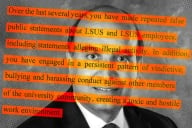You have /5 articles left.
Sign up for a free account or log in.
Xerox, Kleenex and Zoom. What do they all have in common? As victims of their own success, these brands became the generic term for their product or service. Of course there are other brands of copy machines, tissues, and virtual meeting platforms. But for many, these brand names and the product themselves are one in the same.
As enrollment marketers, how do we avoid becoming “Zoom University” with our virtual engagement plans? As we think ahead to a hybrid future of engagement with prospective students it will be more important than ever for every interaction a student has with us to tie back to our brand identity.
The Problem With Un-Branded Experiences
Custom Zoom backgrounds are not the answer to this problem. That’s the same as a table cloth draped over your table at a large college fair. At the end of the day, everyone looks, feels, and acts the same. A Zoom meeting or webinar, despite any efforts to the contrary, will always be a Zoom meeting or webinar that makes your institution look like every other school hosting a Zoom meeting or webinar.
Social media platforms or cumbersome apps are not the solutions either. Social platforms, specifically, are ripe with issues related to distractions from ads and the “What’s Next?” content driven by the algorithm. Privacy is another concern. Whether we like it or not, sending your student audience directly to YouTube is selling your institution’s brand and student data to Google for free.
Avoiding Becoming Generic
At Babson College we have made a concerted effort to ensure we come out of the pandemic stronger and more entrepreneurial than ever.
While we use a variety of tools to connect and communicate (including WebEx for meetings), a cornerstone of our recruitment effort is a privately branded streaming platform that facilitates live virtual events and hosts on demand.
By leveraging this branded platform, our team is able to easily present key topics such as application workshops, financial aid overviews for families and student showcase panels from a single point of access for our audience. Students and parents are sent unique personal login by email and SMS text messages to access the presentations. Because they aren’t on Zoom, there is no app to download or install - boosting accessibility and attendance. This also enables us to unify the data from these outcomes into a single stream of activity that automatically updates student records in our Slate CRM. These types of insights are just not available with meeting software like Zoom alone.
Combatting Zoom Fatigue Means Being Creative
Zoom fatigue is real, simply because there is nothing distinctive about the Zoom experience from one institution to the next. It all looks the same. If all of your content is offered through one virtual platform, and all of your information is shared through PowerPoint slides or 45-minute presentations, then your lack of differentiation and excitement is the cause of the fatigue.
But even if the content is thought-provoking or entertaining, is the non-distinctive experience of Zoom a good representation of your brand? Can your audience easily access the content after the event?
At Babson, we recognize that different virtual platforms play different roles in our virtual engagement strategy. Our branded and distinct platform for large-scale events with a robust on-demand video library is just as important as our 1:1 video sessions. Ultimately it’s the difference between Babson looking like Netflix versus the standard cable package provider. A branded experience means each institution can tell their own story and own the message while meeting students where they are with video content each step of the way.
Courtney Minden is vice president of enrollment management at Babson College.








